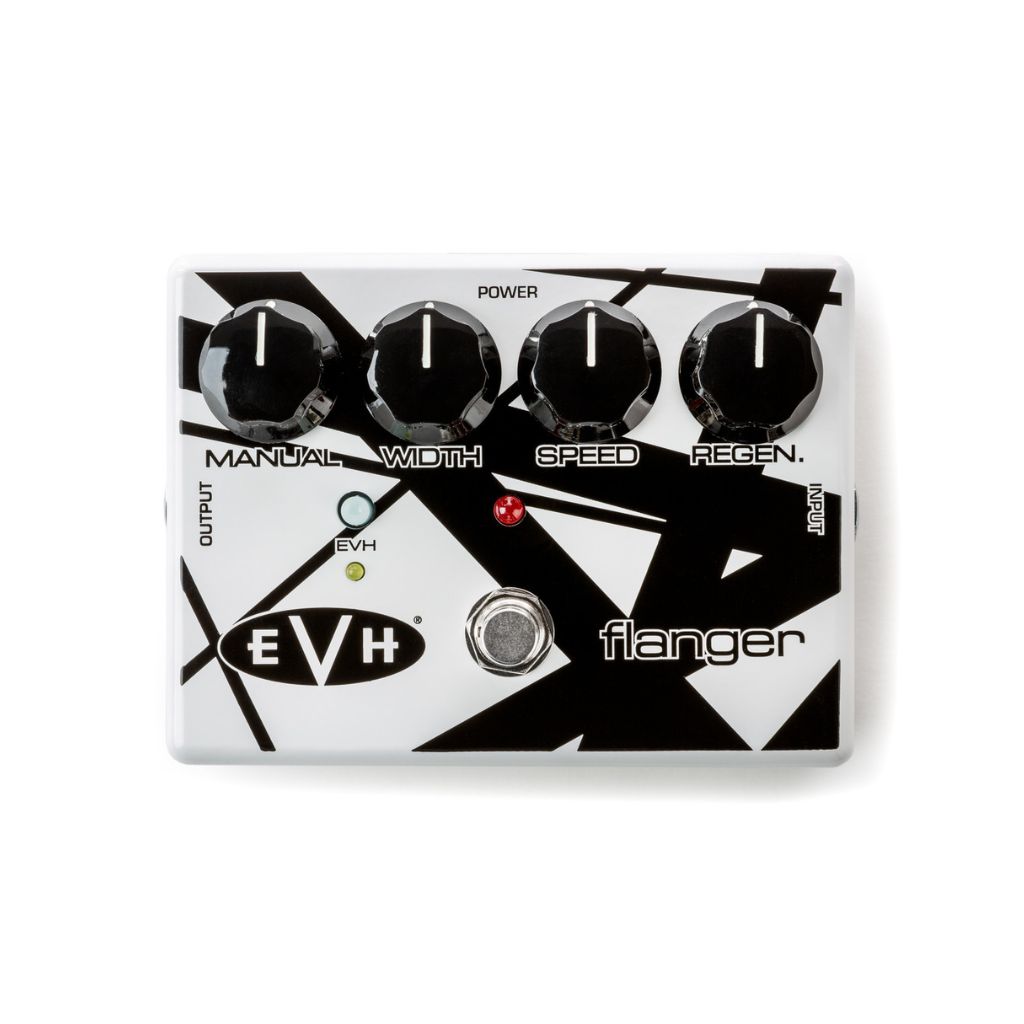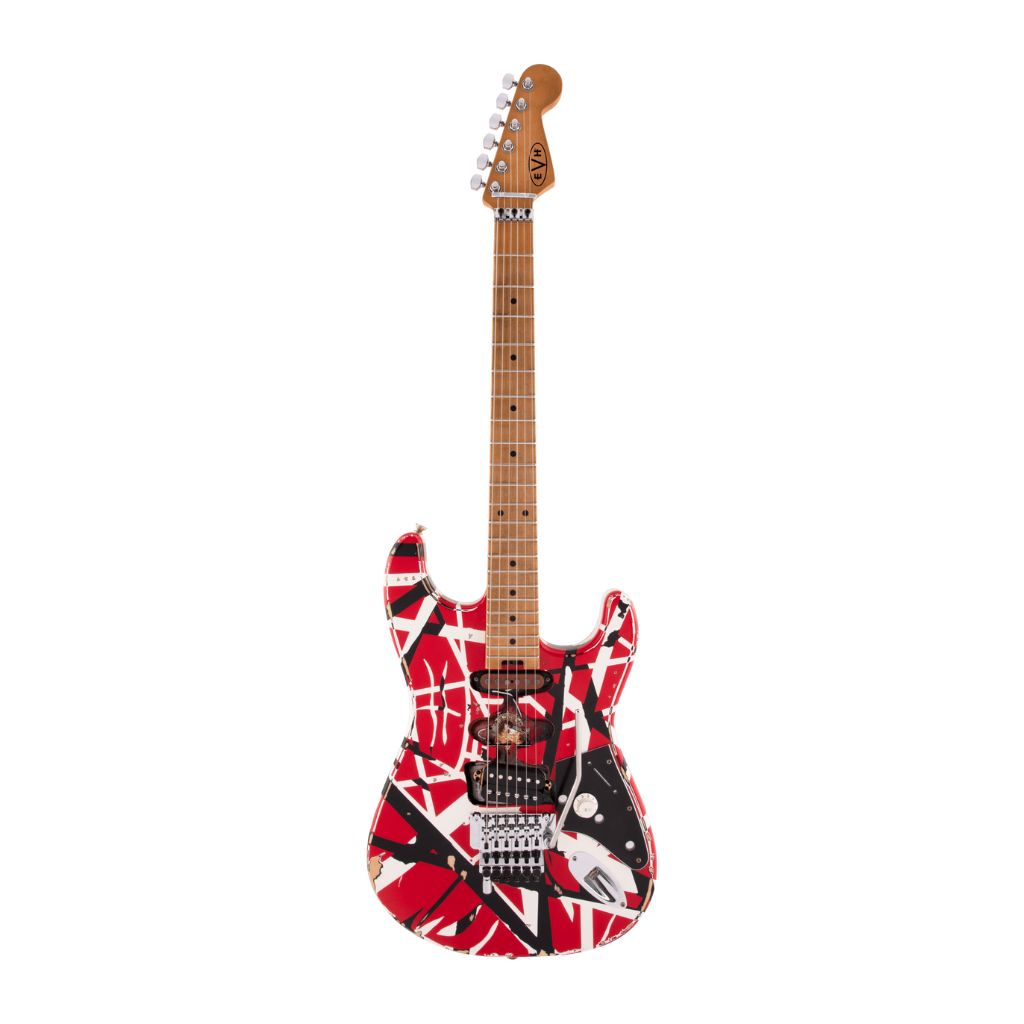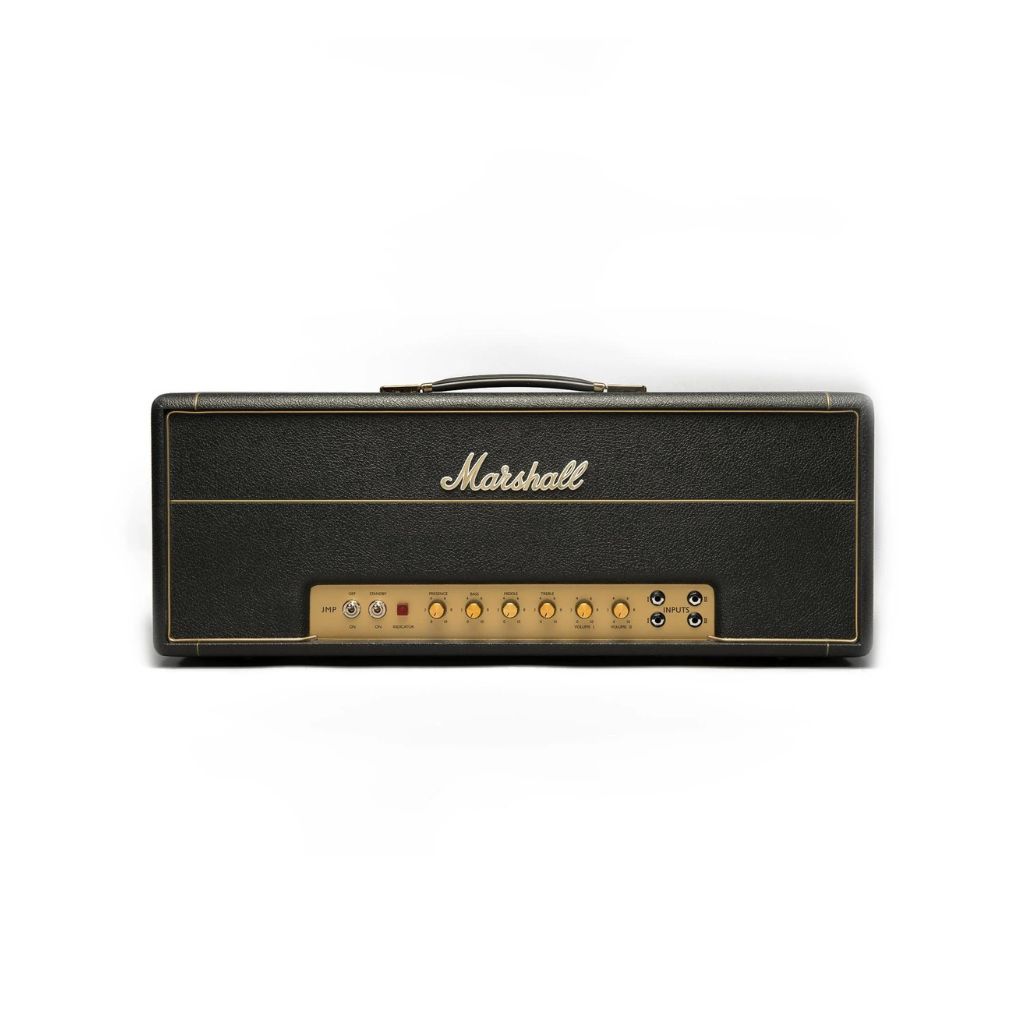Related Tags
The Gear Used By Eddie Van Halen on ‘Van Halen I’
It’s one of the most game-changing debut albums of all time, that instantly made EVH a guitar icon – but what gear was he using to make it?
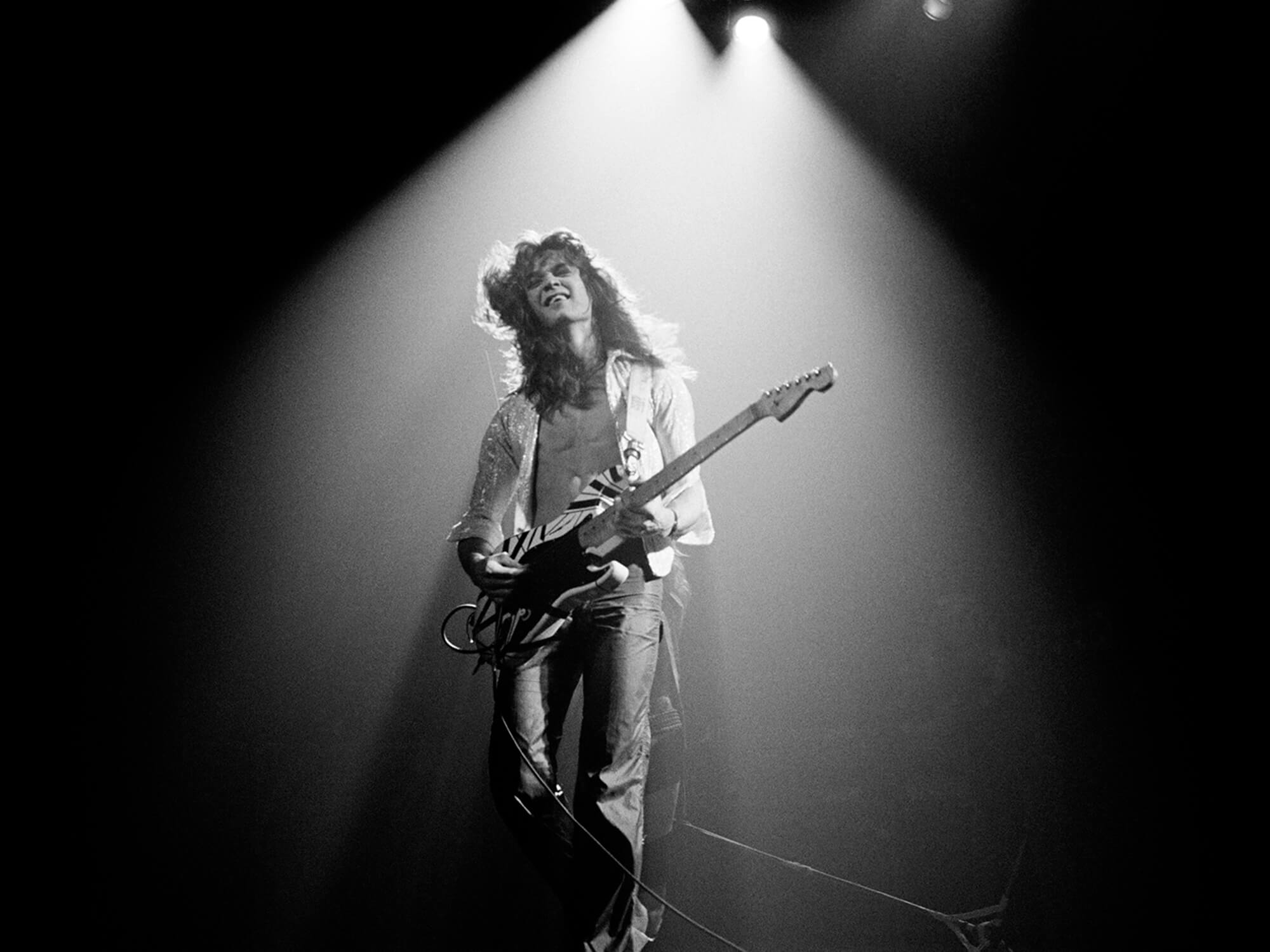
Eddie Van Halen performing in 1978. Image: Fin Costello/Redferns via Getty Images
Featured in this article
Few bands had an impact on the music industry in the way that Van Halen did. Their 1978 debut album remains one of the defining sounds of rock and roll to this day, driven by the wild curiosity and fearless sonic exploration of Eddie Van Halen. Van Halen I was a showcase of Eddie’s technical guitar-playing abilities as well as his creative spirit in the realm of gear modification.
While he was not the first guitar player to modify his gear, he would inspire generations of us to do the same. In this article, we’ll take a closer look at the experimental gear that was used to create the explosive sounds on Van Halen’s debut record.

Guitars
The guitar that would be dubbed ‘Frankenstein’ by its maker (also often called the ‘Frankenstrat’) is one of thee most iconic electric guitars to ever exist. For those who don’t know, Frankenstein was a homebuilt Strat-style guitar that blended the worlds of Fender instruments and Gibson tone and ultimately became the primary tool of Eddie’s legendary sonic experimentation.
The guitar’s single pickup was taken from a 1960s ES-335. Gibson didn’t start potting their humbuckers until the 70s, and so Eddie took it upon himself to dip the pickup in some surf wax to minimize microphonic feedback and interference. Eddie also had the PAF pickup re-wound to his specifications.
Eddie explained the Frankenstrat in his own words in this 1978 interview with Guitar Player:
“It is a copy of a Fender Stratocaster. I bought the body for $50 and the neck for $80, and put in an old Gibson PAF pickup that was rewound to my specifications. I like the one-pickup sound, and I’ve experimented with it a lot. If you put the pickup really close to the bridge, it sounds trebly, if you put it too far forward, you get a sound that isn’t good for rhythm. I like it towards the back; it gives the sound a little sharper edge and bite. I also put my own frets in, using large Gibsons. There is only one volume knob-that’s all there is to it. I don’t use any fancy tone knobs.”

Frankenstein would be heavily modded over the years, but at the time of the recording of Van Halen I, the guitar was sporting black and white stripes, but not the famous red paint – that would come later.
It’s also believed to have had a stock Fender tremolo bridge or possibly a brass Mighty Mite tremolo bridge – Eddie had not yet routed it out for a Floyd Rose. However, the only time we see (what looks like) a brass tremolo is during the photoshoot for the album’s cover, and then it reverts back to the stock Fender tremolo.
Eddie was famous for being intentionally deceptive with his gear to throw off would-be copycats. So it’s possible he just put a different bridge on for the photo shoot.
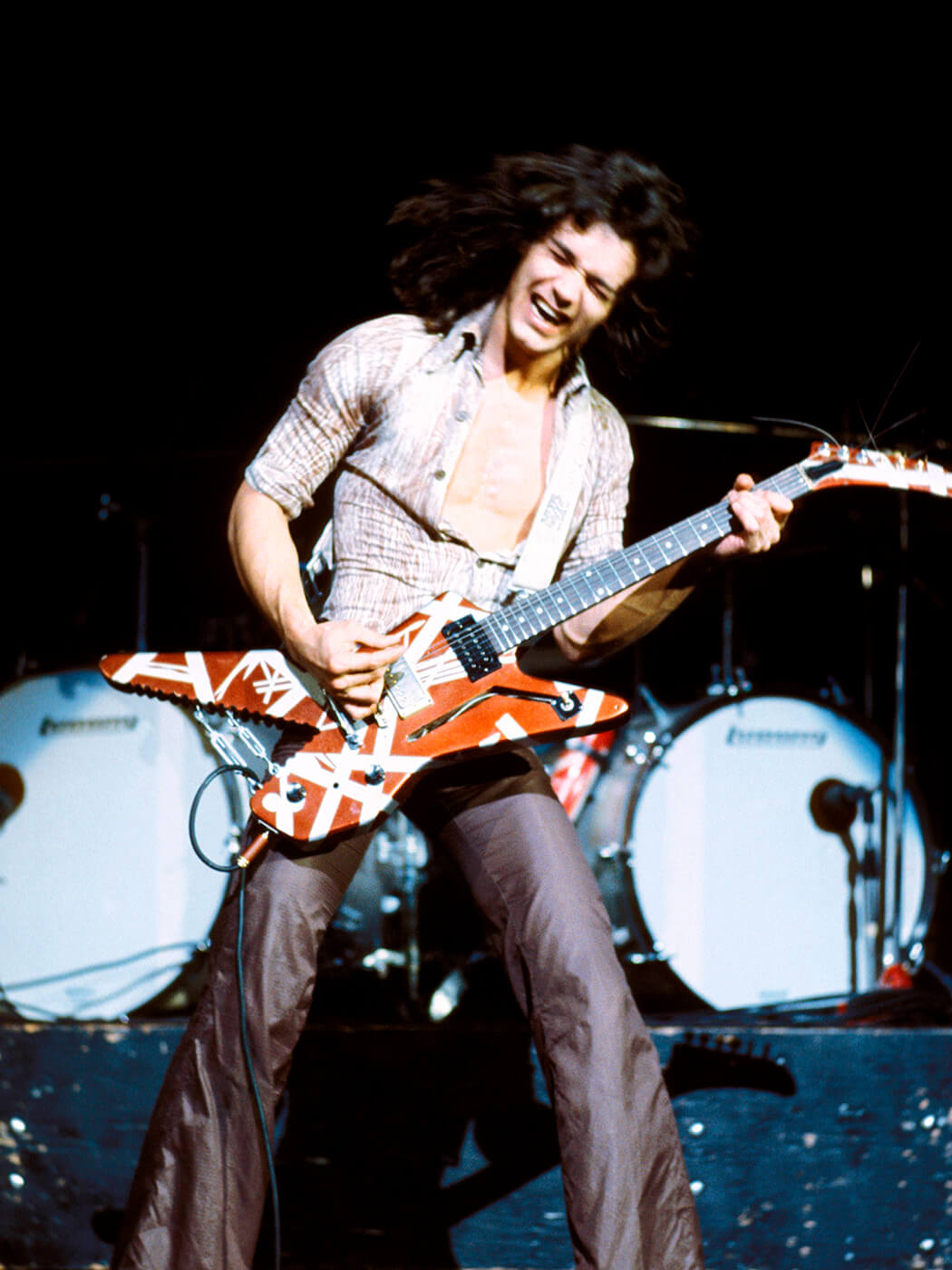
The Frankenstrat was, of course, used quite a bit on the album, but the iconic status of this guitar has somewhat overshadowed the fact that about half of Van Halen’s debut album was recorded with another guitar: a 1970s Ibanez Destroyer 2459.
The Destroyer was Ibanez’s answer to the Gibson Explorer, and it made its debut in 1975 being discontinued in 1978. Eddie got his in 1977, right before recording sessions for the album began (between August and October of 1977).
At the time of the album’s recording, Eddie had made a few minor modifications to the guitar – the natural wood finish was changed for white and the stock chrome-plated bridge was replaced with a gold one. The pickups, however, appeared to be stock – according to the spec manual, those would have been Ibanez Super 70s.
Specifically, this guitar was used to record the cover of the Kinks hit, You Really Got Me, as well as all the non-tremolo tracks on the album. It can also be heard on Running With The Devil, Jamie’s Cryin’, Feel Your Love Tonight, and On Fire. Later on, this guitar was heavily modified and was known, from then on, as The Shark.
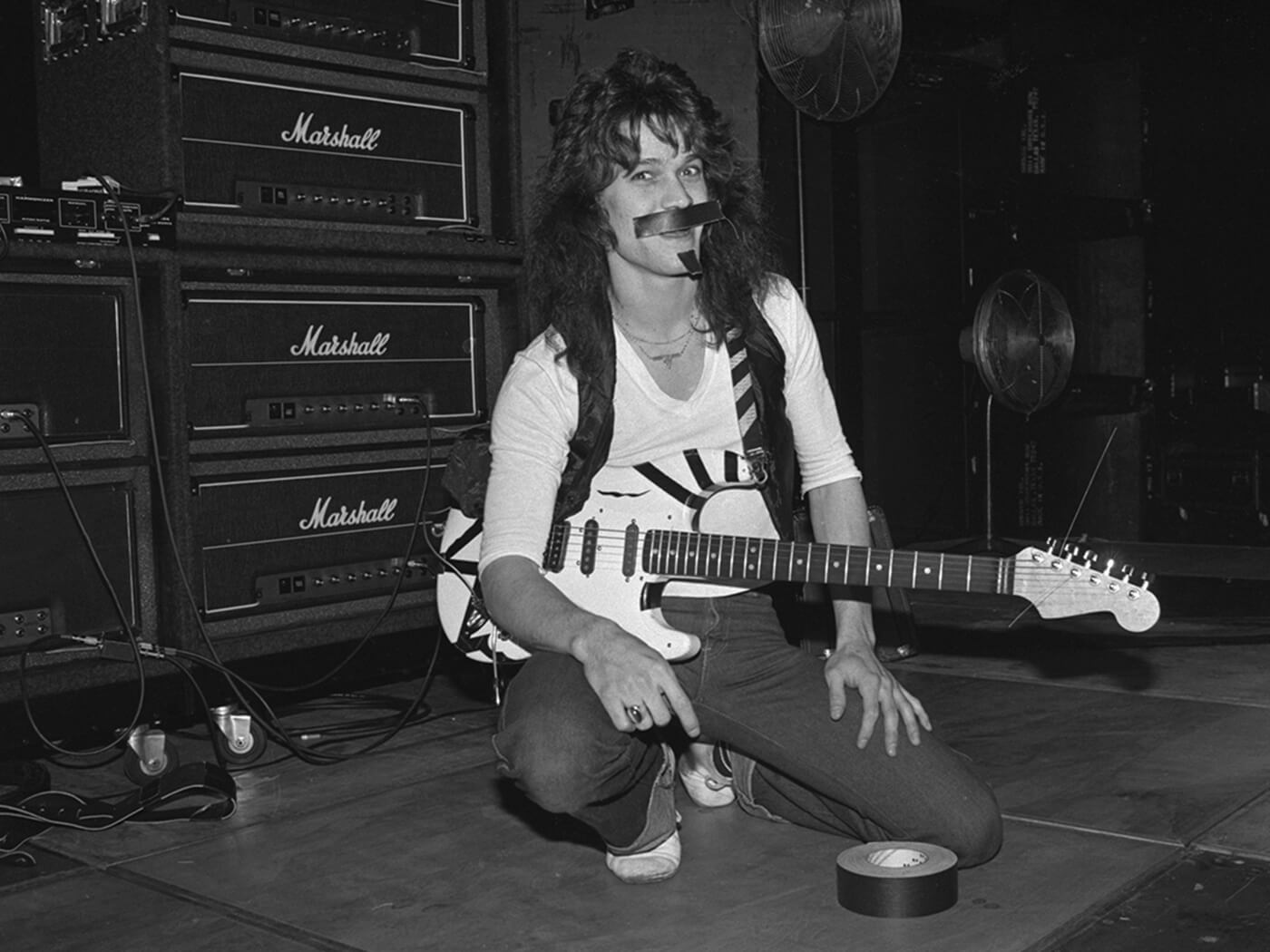
The Amps
Eddie Van Halen used a 1967 or ’68 Marshall 1959 Super Lead on the first six Van Halen records. This amp has been the subject of an incredible number of myths online. Most of the myths have to do with modifications done to the amp and, of course, the use of an interesting bit of tech called the Variac.
Many of these myths were perpetuated by Eddie himself (again, to thwart copycats). He stated in several interviews, including the 1978 Guitar Player interview, that he used a Variac to increase the voltage to the amplifier, when, in fact, he was using the Variac to dial the amp’s voltage down. This had the effect of starving the amp of voltage, like a light bulb dimming to a brownish hue – this led to the tone on this album being forever known as the “Brown Sound”.

As EVH told The Smithsonian in 2017: “I went to this place called Dial Radio and asked, ‘Do you have any kind of like an industrial variable voltage transformer that I can use like a light dimmer?’ and he said, ‘Yeah I got this thing called a Variac.’ I said ‘Okay cool,’ and I take it home and plug the amp into it and I’d lower the voltage from like 110 slowly down to 100 and … the lowest I ever went was like 60.
“Depending on the room we were playing, I’d set it anywhere between 60 and 100 because the only way the amp sounded good was with everything all the way up, so that became my volume knob. If we were playing little bars, I’d set it to like 60 volts; somewhere a little bit bigger, I’d crank it to 80, and for recording, the sweet spot seemed to be 89 volts.”
Interestingly, none other than Billy Corgan may have solved that mystery regarding the possible modifications to his amps. According to an interview Corgan did with BBC 6 Music, he was tasked with interviewing Eddie for a guitar magazine in the late 90s, and recounted the following story:
“Towards the end of the interview, I said to him, ‘There’s all those stories about the amp you used on Van Halen I and tada tada da. I said, ‘Do you still have the amp?’ He goes, ‘Oh, yeah.’ He takes me around the corner, kind of near the dustbin, and he’s, like, ‘There it is.’ I go, ‘What about all the stories that you did all this special modification?’ He goes, ‘Oh, it’s not true at all.’”

Effects
Unlike the huge amount of speculation and mythmaking about the guitar and amp used on this record, Eddie’s pedalboard for the recording sessions and subsequent tour is pretty simple and free of conjecture. It consisted of an MXR Phase 90, an MXR 117 Flanger, an MXR 6 Band EQ, a Maestro Echoplex, and a Univox EC-80A Tape Echo. Nice and easy!

